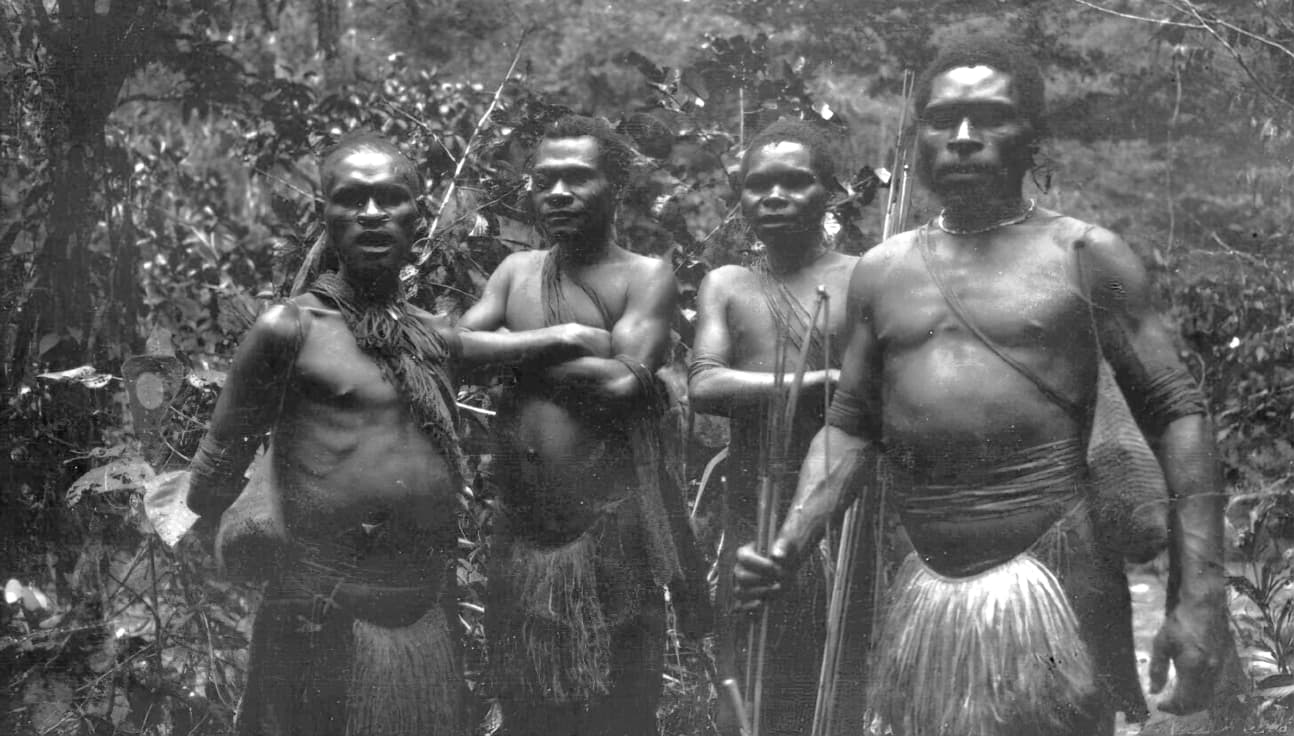Angu on:
[Wikipedia]
[Google]
[Amazon]
 The Angu or Änga people, also called Kukukuku (pronounced "cookah-cookah"), are a small group speaking a number of related languagesEthnologue: Languages of the World, Sixteenth Edition, M. Paul Lewis, editor; and living mainly in the high, mountainous region of south-western Morobe, a province of
The Angu or Änga people, also called Kukukuku (pronounced "cookah-cookah"), are a small group speaking a number of related languagesEthnologue: Languages of the World, Sixteenth Edition, M. Paul Lewis, editor; and living mainly in the high, mountainous region of south-western Morobe, a province of
A New Venture into the Unknown
booklet produced by the Melanesian Mission on their proposed mission to the Kukukuku people of New Guinea, 1935.
by Carolyn Leigh, ''Art-Pacific'', August 19, 2002. Retrieved December 28, 2005
"The Smoked Corpses of Aseki"
by Ian Lloyd Neubauer "BBC - Travel", December 3, 2015. Retrieved October 1, 2016 {{authority control Ethnic groups in Papua New Guinea Hunter-gatherers of Oceania
 The Angu or Änga people, also called Kukukuku (pronounced "cookah-cookah"), are a small group speaking a number of related languagesEthnologue: Languages of the World, Sixteenth Edition, M. Paul Lewis, editor; and living mainly in the high, mountainous region of south-western Morobe, a province of
The Angu or Änga people, also called Kukukuku (pronounced "cookah-cookah"), are a small group speaking a number of related languagesEthnologue: Languages of the World, Sixteenth Edition, M. Paul Lewis, editor; and living mainly in the high, mountainous region of south-western Morobe, a province of Papua New Guinea
Papua New Guinea, officially the Independent State of Papua New Guinea, is an island country in Oceania that comprises the eastern half of the island of New Guinea and offshore islands in Melanesia, a region of the southwestern Pacific Ocean n ...
. Even though they are a short people, often less than five feet tall, they were feared for their violent raids on more peaceful villages living in lower valleys.
An account of some of the first contact between the Angu and westerners is described vividly by J. K. McCarthy in his 1963 book ''Patrol into Yesterday: My New Guinea Years''. At the time, despite the high altitude and cold climate of their homeland, the Änga wore limited clothing, including grass skirts, with a piece similar to a sporran
The sporran (; Scottish Gaelic for ' purse'), a traditional part of male Scottish Highland dress, is a pouch that functions as a pocket for the kilt. Made of leather or fur, the ornamentation of the sporran is chosen to complement the formality ...
, and cloaks made from beaten bark, called ''mals''.
Today, four of the Änga languages are almost extinct, but the largest tribe, the Hamtai, are thriving, with a population of 45,000.
Some Aseki district tribes have become a tourist attraction due to their smoked mummies. There are three famous mummy sites around Aseki in the Hamtai territory. The Hamtai people now have a small income from charging scientists, tourists and photographers a fee before entrance to the mummy sites. Although it is unclear when their practice of mummification began, it ended in 1949 with the arrival of missionaries.
First contact with the Toulambi
A film byJean-Pierre Dutilleux
Jean-Pierre Dutilleux (born 13 October 1949) is a Belgian author, activist, and filmmaker known for his work documenting indigenous cultures and environmental issues.
Career
Over the last forty years, Dutilleux has produced thirty films, incl ...
purports to show first contact between a group of Toulambi, reportedly a part of the Angu People, and White people in December 1993. It has been accused of being staged by anthropologist Pierre Lemonnier, who claims a first-hand relationship with the tribe. Lemonnier, however, was sued for defamation and lost the case.
A first contact between the Toulambi tribe was also reported in ''The Sydney Morning Herald'' on 22 October 1993, not long before the meeting with Dutilleux:
Government officials in Papua New Guinea say they have discovered another 'lost tribe' ..The latest group, dubbed the Toulambi tribe, apparently was discovered in a remote area of thick jungle in the Papua New Guinea Highlands... Two near-naked members of the tribe were 'scared to death' when taken by a hunting party to the nearest government station to taste store food and view white men and aeroplanes for the first time... But some people remain sceptical. They believe the group may belong to known isolated border tribes but have been left off the latest census.
References
External links
A New Venture into the Unknown
booklet produced by the Melanesian Mission on their proposed mission to the Kukukuku people of New Guinea, 1935.
by Carolyn Leigh, ''Art-Pacific'', August 19, 2002. Retrieved December 28, 2005
"The Smoked Corpses of Aseki"
by Ian Lloyd Neubauer "BBC - Travel", December 3, 2015. Retrieved October 1, 2016 {{authority control Ethnic groups in Papua New Guinea Hunter-gatherers of Oceania